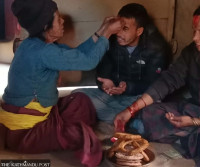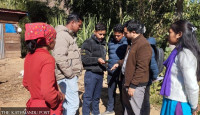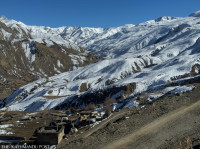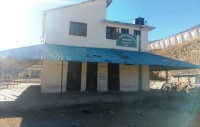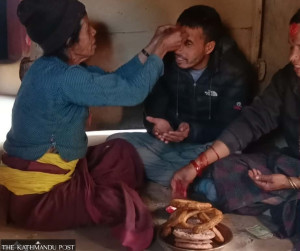Karnali Province
Villages in Limi Valley are turning into ‘ghost settlements’
Lack of basic facilities means the residents have had to make a difficult choice—whether to stay back and endure the difficulties or to leave for good.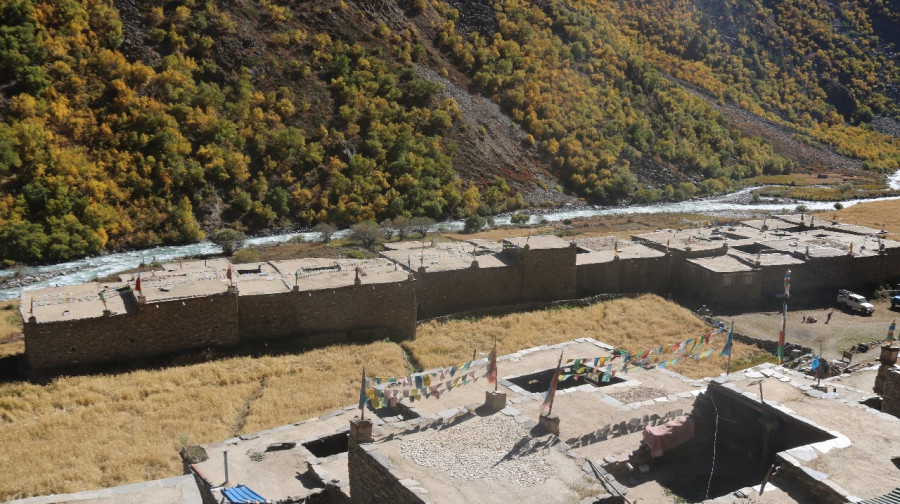
Tripti Shahi
Until 15 years ago, the scenic Jang village in Limi Valley had 63 households. Now there are two all told. “It has turned into a ghost settlement,” says Paljor Tamang, ward chairman of Namkha Rural Municipality-6, where the village is located.
Limi Valley, which lies at Namkha Rural Municipality’s ward 6, has three villages—Jang, Halji and Til.
Lying beyond the Himalayas in the remote northern part of Humla district, Jang village today stands as a stark evidence of how migration is turning mountain and hill villages across the country into ghost settlements.
The families of Jang village have out-migrated to Nepalgunj, Kathmandu, China and other places, according to Paljor.
“Until last year, 17 households were still remaining,” Paljor adds. Fifteen of them migrated from the village permanently this year. And the remaining two, who have stayed back due to financial constraints, are also in Kathmandu currently to avert the severe cold. “They will return after winter,” Paljor says. “As a people’s representative, I repeatedly urged the other families not to leave their birth place, but to no avail.”
Along with their private properties, the families also took away some important properties of the community, including some archaeologically important things.
“The villagers visited the ward office with a recommendation letter from the Department of Archeology seeking permission to take the properties of the local monastery to Kathmandu,” Paljor says. “They sought the ward’s recommendation stating that 81 households of the total 83 households in Limi reached a consensus to shift the belongings of the monastery to Kathmandu. As they met all required processes, the ward office had no choice.”
Not only the villagers but the elected people’s representatives have also started migrating from the village. Phuti Lama, a ward member and member of the rural municipality’s executive committee, resigned from her post a few months ago. However, the rural municipality has not yet approved her resignation.
Sandup Tamang, who is one among the last individuals remaining in the Jang village, said that they are staying back as they don’t have houses in other places. “We cannot pay rent regularly so we did not migrate to other places,” said Tamang, who is currently living in Kathmandu to avoid the cold in Jang. “We will return to the village in the spring season.”
Situation of neighbouring Til village is also the same. As many as 18 families have migrated from the village over the past few years. There are 22 households in Til village now, according to Paljor.
People who migrated from Jang and Til said they were compelled to leave their birthplace due to a lack of facilities. “The youths and children left for towns and cities for education and jobs, leaving behind the elderly and the women,” said Kunchok Sewang Lama, who migrated from Jang recently. “We were conflicted about whether to stay back and endure the suffering or leave. We chose the latter.”
Kunchok added that the children who stay in the towns and cities tend to force their parents back home to migrate from Limi Valley.
The local people in Limi have to descend from around 5,000 metres altitude just to reach the district headquarters, the only place where they can receive government facilities and services. The land in Limi is not quite arable. The villagers produce some indigenous crops but they are enough only for some months.
The area remains disconnected with other parts of the district as snow blocks the foot trail.
“We can get minor treatment from a local health institution in Limi but there is no alternative to charter a helicopter in case of serious illness or injuries,” Kunchok said. “But not everyone can afford helicopter service.”
The Bhrikuti Basic School, which used to be the only educational institution in Jang village, was shuttered four years ago.




 15.12°C Kathmandu
15.12°C Kathmandu
